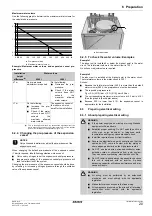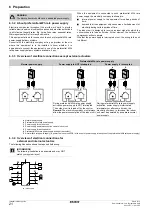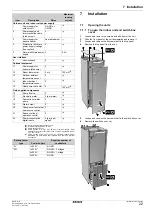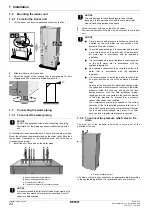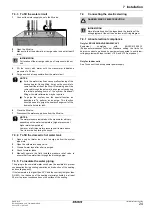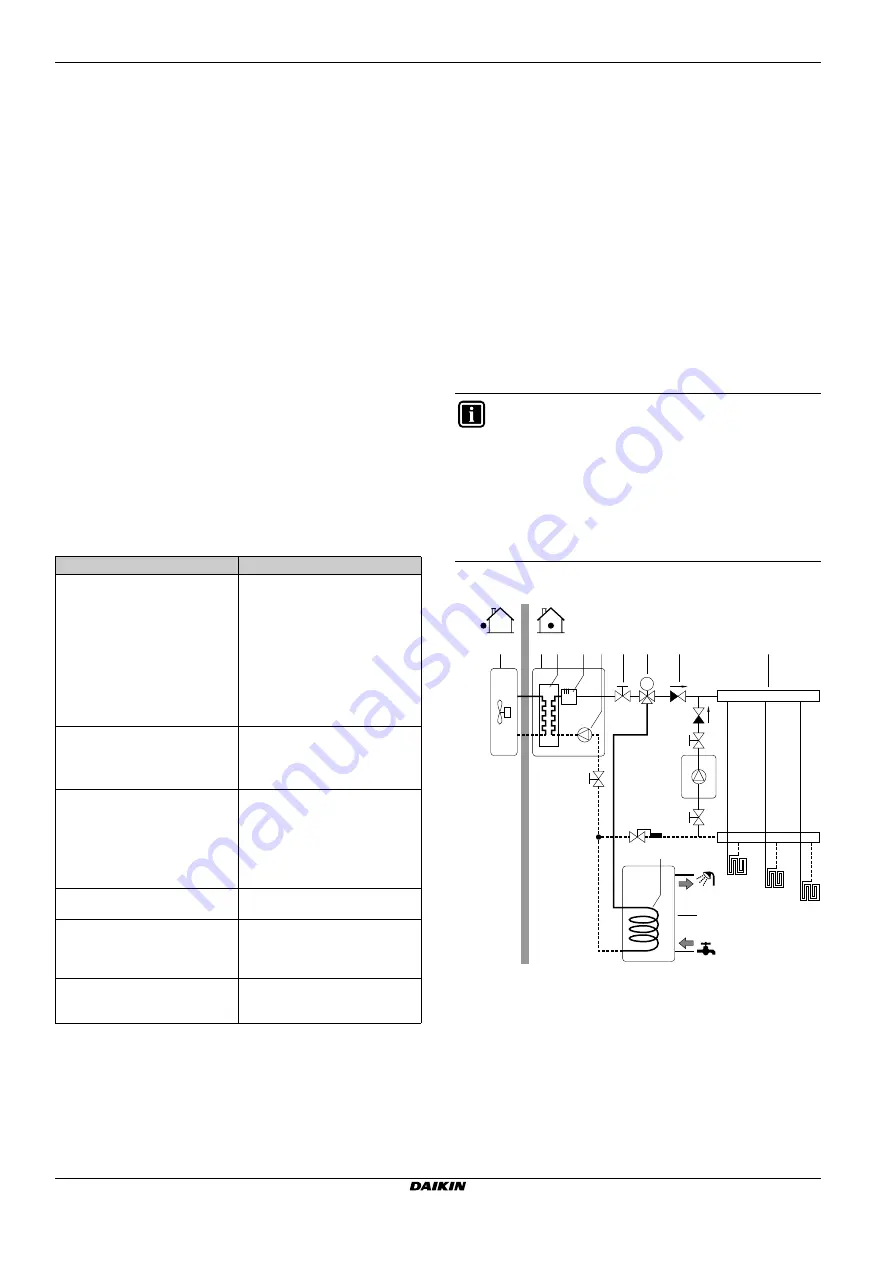
Installer reference guide
11
EHVH/X16
Daikin Altherma - Low Temperature Split
4P313777-1 – 2012.05
5 Application guidelines
Q
For the main zone:
Q
A mixing valve station is installed before the under floor
heating.
Q
The pump of the mixing valve station is controlled by the
ON/OFF signal on the indoor unit (X2M/5 and X2M/7;
normal closed shut-off valve output).
Q
The room temperature is controlled by the user interface,
which is used as room thermostat.
Q
For the additional zone:
Q
The heat pump convectors are directly connected to the
indoor unit.
Q
The desired room temperature is set via the remote
controller of the heat pump convectors for each room.
Q
The heating or cooling demand signals of each heat pump
convector are connected in parallel to the digital input on
the indoor unit (X2M/1 and X2M/4). The indoor unit will only
supply the desired additional leaving water temperature
when there is an actual demand.
Q
The user interface connected to the indoor unit decides the
space operation mode. Mind that the operation mode on each
remote controller of the heat pump convectors must be set to
match the indoor unit.
Configuration
Benefits
Q
Comfort.
Q
The smart room thermostat functionality can decrease or
increase the desired leaving water temperature based on
the actual room temperature (modulation).
Q
The combination of the two heat emitter systems provides
the excellent heating comfort of the under floor heating, and
the excellent cooling comfort of the heat pump convectors.
Q
Efficiency.
Q
Depending on the demand, the indoor unit supplies
different leaving water temperature matching the design
temperature of the different heat emitters.
Q
Under floor heating has the best performance with
Altherma LT.
5.3
Setting up an auxiliary heat source for space
heating
Q
Space heating can be done by:
Q
The indoor unit
Q
An auxiliary boiler (field supply) connected to the system
Q
When the room thermostat requests heating, the indoor unit or
the auxiliary boiler starts operating depending on the outdoor
temperature (status of the changeover to external heat source).
When the permission is given to the auxiliary boiler, the space
heating by the indoor unit is turned OFF.
Q
Bivalent operation is only possible for space heating, NOT for
domestic hot water production. Domestic hot water is always
produced by the DHW tank connected to the indoor unit.
Setup
Q
Integrate the auxiliary boiler as follows:
A
Additional leaving water temperature zone
B
Room 1
C
Room 2
D
Main leaving water temperature zone
E
Room 3
a
Remote controller of the heat pump convectors
b
User interface
c
Mixing valve station
Setting
Value
Unit temperature control:
Q
#: [A.2.1.7]
Q
Code: [C-07]
2 (RT control): Unit operation is
decided based on the ambient
temperature of the user interface.
Note:
Q
Main room = user interface
used as room thermostat
functionality
Q
Other rooms = external
room thermostat
functionality
Number of water temperature
zones:
Q
#: [A.2.1.8]
Q
Code: [7-02]
1 (2 LWT zones): Main +
additional
In case of heat pump convectors:
External room thermostat for the
additional
zone:
Q
#: [A.2.2.5]
Q
Code: [C-06]
1 (Thermo ON/OFF): When the
used external room thermostat or
heat pump convector can only
send a thermo ON/OFF
condition. No separation
between heating or cooling
demand.
Shut-off valve output
Set to follow the thermo demand
of the main zone.
Shut-off valve
If the main zone must be shut off
during cooling mode to prevent
condensation on the floor, set it
accordingly.
At the mixing valve station
Set the desired main leaving
water temperature for heating
and/or cooling.
INFORMATION
Q
During heating operation of the heat pump, the
heat pump operates to achieve the desired
temperature set via the user interface. When weather-
dependent operation is active, the water temperature
is determined automatically depending on the outdoor
temperature.
Q
During heating operation of the auxiliary boiler, the
auxiliary boiler operates to achieve the desired water
temperature set via the auxiliary boiler controller.
a
b c
d e
f
g
h
j
FHL1
FHL2
FHL3
M
h
i
i
l
k
f
m
n





















